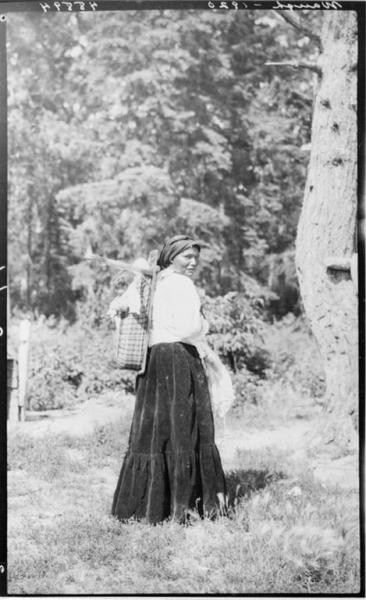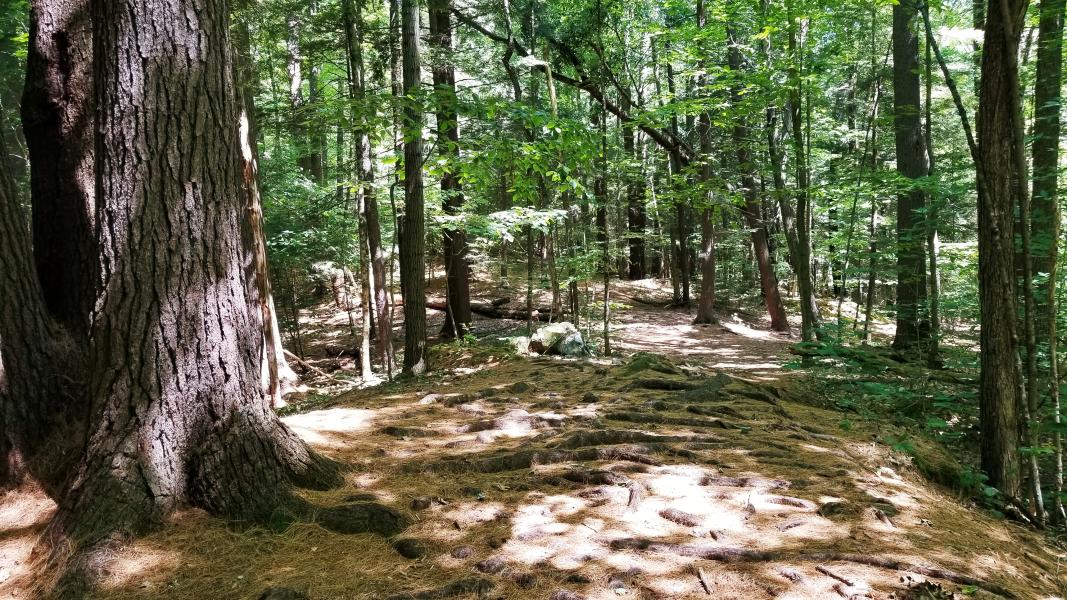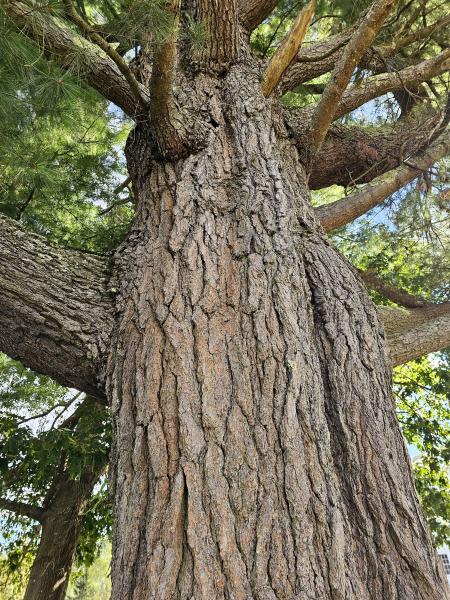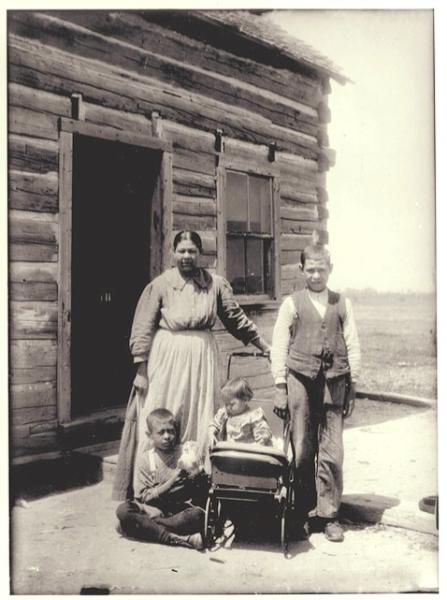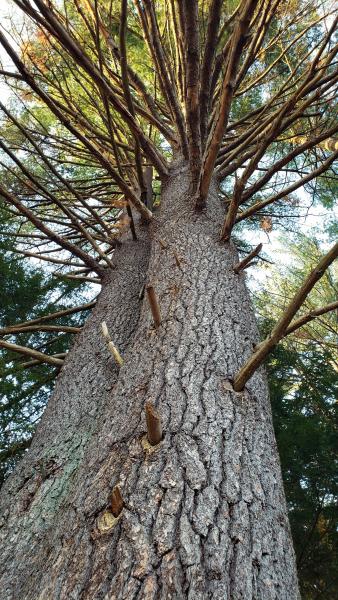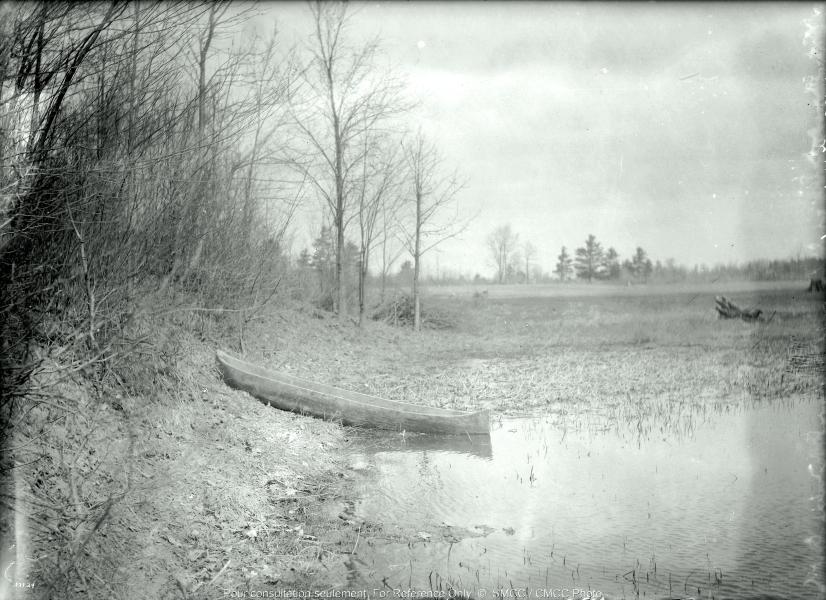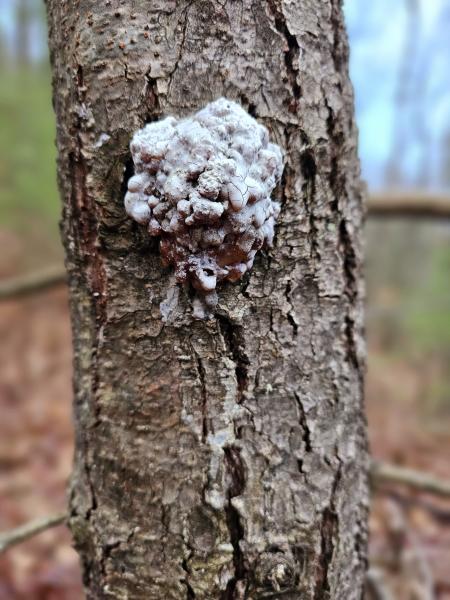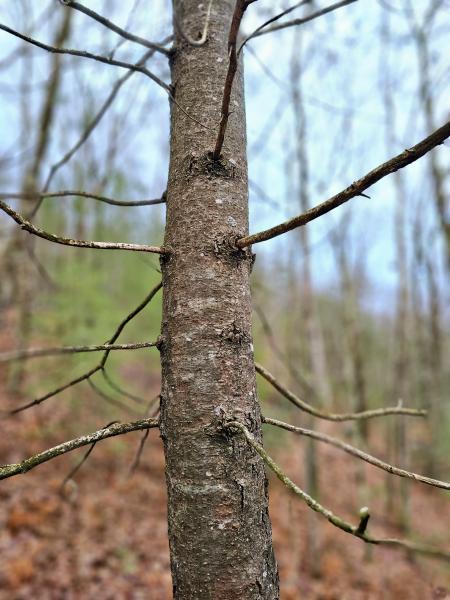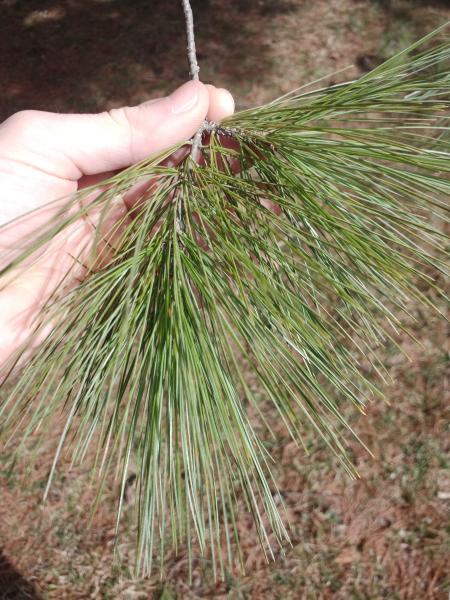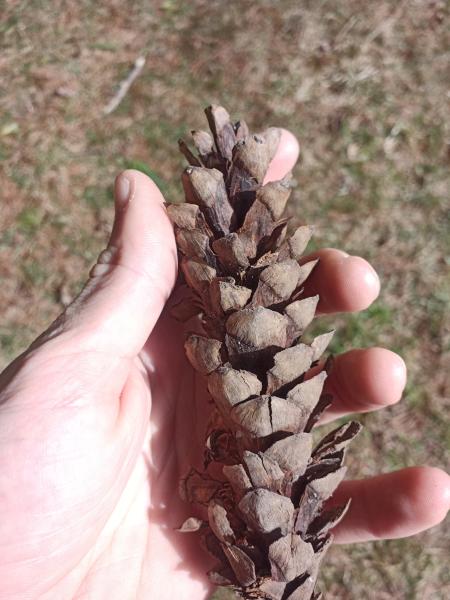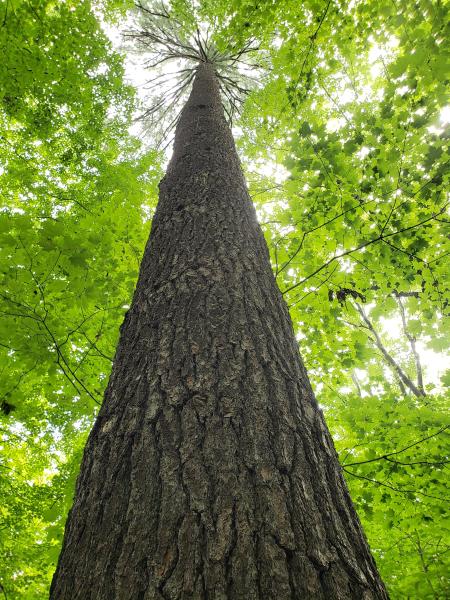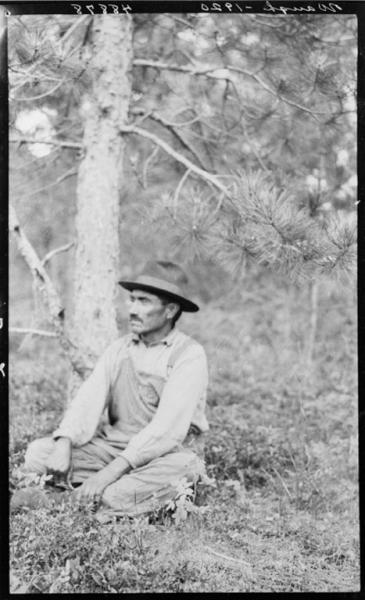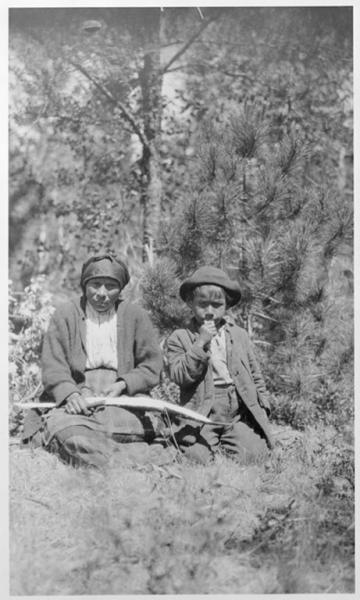
Names and Their Meanings
White Pine - Pinus strobus
Red Pine - Pinus resinosa
Jack Pine - Pinus banksiana
White Pine
Description
White pine is a tall tree that grows up to between 100 and 230 feet. Mature bark is dark grayish brown, thick, and deeply furrowed; when the tree is younger, the bark is smoother and dark grayish brown with a purplish red tinge. The branches are whorled, spreading and upswept and trees are conical in shape; as each tree grows and ages, branches break off at the bottom, sending the conical shape of the tree upwards to become a rounded or somewhat flattened crown, which then often becomes asymmetrical with the effects of wind. The evergreen needles are pale to deep green or bluish green, soft and flexible, also whorled around the stem, growing in bundles of 5. White pine occurs in light sandy to heavily textured soils in moist to dry sites, including mixed and conifer forests and old fields. They tolerate shade when young, but grow to be the tallest trees in the forest.
Conservation Status
S5 (Secure) in Ontario, Québec, and New York
Red Pine
Description
Red Pine, Pinus resinosa, is a monoecious tree that grows between 65 and 100 feet at its tallest. It has a straight and slender trunk, the color red in its name referring to bark that is reddish to pink in color, intermixed with gray. Bark pattern is thin, asymmetrical scaly plates of layered reddish brown and gray colors. The crown of this tree is spreading. Needle bundles occur in two per fascicle, their color yellow-green and their consistency thicker, more brittle and drier than the pliable needles of White pines. The range of Red pine is nearly contiguous to the range of White pine, but slightly smaller. Red pine can tolerate a variety of moisture in the soil as well as poor, rocky, acidic and sandy soil, but are shade intolerant and need space to grow. Red pines grow in pure stands, and also often with White pine and Jack pine. Dominance of Red pine is sustained by periodic moderate to severe fire (prescribed or cultural burns). Too frequent fire, and lack of fire, prevents Red pine from growing. Euroamerican settlement, forestry and development has been especially hard on this species, due to suppression of fire, logging of the species, industrialization and development of Red pine’s habitats, and climate warming in the 21st century.
Conservation Status
S5 (Secure) in Ontario, Québec, and New York. S1 (Critically Imperilled) and S2 (Imperilled) in southerly range, due to climatic warming.
Jack Pine
Description
Jack pine is the smallest of the three pines, growing to only ~ 90 feet, and living comparatively shorter than White or Red pines. Jack pine also has a long, straight trunk, with lower branches breaking off as it grows taller, and the crown spreading at the top to a rounded or flattened crown, with branches upturned. Jack pine needles are also 2 per fascicle, but shorter than White and Red pine needles, being between 1 and 2 inches long. Needles grow directly out of and on all sides of branchlets. Jack pine is widely distributed throughout the boreal forests of the North in all Canadian provinces except for Yukon and British Columbia, its southernmost range being the Great Lakes states, Vermont, New York, and Maine. Jack pine is highly shade-intolerant, growing rapidly as an early successional species where mineral soil has been exposed to fire, and on sand barrens and dunes.
Conservation Status
S5 (Secure) in Ontario and Québec; S3 (Vulnerable) in New York
USES
The great white pine is the Tree of Peace of the Haudenosaunee, and a cultural keystone species. During the time of the Peacemaker, when the council that became the fifty chiefs and Tadodaho, and the fifty clanmothers and Jikonsase/ Tsikonsase agreed upon a great peace among the five nations, the oral history recounts that they cast their weapons of war in a hole in the ground (to the underworld) underneath the Great White Pine. At the same time, they committed to guarding that peace together like a bald eagle sitting atop the tallest of the white pine trees, having the ability to see for miles and call out to kin if any threat should face the Haudenosaunee. The White pine was the tree chosen by the Peacemaker to be a symbol of the unity between the five nations, and all peoples. The evergreen nature of the White pine is a mnemonic for holding that great peace in one’s mind and heart, throughout time, as the five needles in each bundle symbolize the five nations who agreed upon the peace together. The White pine is represented in the middle at the central fire of the Hiawatha wampum, and hence, on the Haudenosaunee flag, too.
Enormous white pines were some of the trees that colonists first observed when visiting Turtle Island (North America). They remarked that these trees were larger than any ship mast they had seen, and that Indigenous people in the Northeast built their homes of long beams of timber, principally of pines. Newcomers and settlers were in awe at the size and market potential of white pines, which covered the landscapes from what became Newfoundland down through New Jersey, and the Appalachian parts of the Virginias and North Carolina. European royalty began a colonial logging industry in earnest in the 17th Century, to harvest white pine trees for ship masts and timber, which transformed the landscapes of the Northeast over the next two centuries, until most of the old growth pine trees were harvested in 1850. The Crawford Lake archaeological site in Ontario indicated that Haudenosaunee moving to that area changed the composition of the forest from beech and maple, to beech, maple, oak and pine. Oak and pine succeeded beech and maple on abandoned fields, possibly also as successional tree species after cultural burning was used to clear and manage the fields.
White pine’s needles are collected to make nutritious teas, vinegars, and even sodas that are high in Vitamin C, and have a delicious lemon-y flavor. Pine teas are useful for all lung ailments and colds, due to their antimicrobial and antibacterial properties, and - related - for alleviating grief (their application in homeopathic and tree essence medicines). Pine pitch, also referred to as pine tar or sap, as a medicine has been used as a tea (due to its concentration of nutritional components) to treat and prevent cancer, along with spruce pitch. Pine pitch of white and red pines has been used extensively for hundreds of years by Anishinaabe and Haudenosaunee, as a caulk for canoes and traditional dwellings, as well as other craft and technology made from woody plants and barks, such as birch bark scroll, baskets and moose calls. White pine’s timber has been used extensively for homes, beginning with traditional Indigenous homes such as Longhouses, cookhouses, and their fortifications, to log houses and forts during the 17th - 19th centuries. Settlers logged white and red pines extensively for lumber, ship masts, construction timber, furniture, and pulpwood. White pines are also one of the tree species people use to make dugout canoes.
The sap of Red, White, and Jack pines can be used as a liniment for feet and the needles for a warm foot soak/bath. The needles are a respiratory medicine for lungs, nasal and bronchial concerns. Similarly, all three pines are used in salves that can be rubbed on the face and chest. Jack pine is an important tree across the boreal forest and North of Canada, occurring in numerous traditional Indigenous stories.
Frederick Wilkerson Waugh found in 1916 that Anishinaabe used a decoction of white pine sap along with tamarack for diarrhea and dysentary, boiled in water and to drink a lot of it. Haudenosaunee used tea of the needles or a liniment made of the sap for difficulty breathing, colds, coughs, and rheumatism. Waugh observed at Six Nations of the Grand River that white pine timber and logs were used to construct longhouses, cookhouses, cabins, and corn cribs. Waugh collected bowls made of young white pine bark, and utensils made of pine wood. Waugh also observed Anishinaabe eating the inner bark of Jack pine. The backs of cradleboards can be made from pine woods.
